A simple home lab experiment demonstrates that table salt draws water out of the air. This works in an Antarctic desert; might it happen on Mars?
Easy enough for home, this experiment can be expanded into a science project.

Air, Table Salt and Water in a Home Experiment about Mars
by mikedehaan
Can humid air moisten ordinary table salt? Try it at home to learn why scientists hope Mars might have some moisture its soil.
The Hope of Finding Water on Mars
Why Bother Moistening Table Salt with Air?
Since our only model for life involves water, scientists hope to find water on Mars or other planets as a prelude to finding alien life forms.
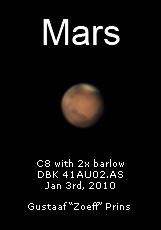
In 2012, Joseph Levy of Oregon State University reported finding moisture in the McMurdo Dry Valleys of Antarctica. The sandy soil often has areas with moisture despite a lack of snow.
Levy determined that the salty soil can draw moisture from the atmosphere, to form a brine that actually supported a microbial ecosystem.
This same process might retain moisture in select regions of Mars. Even if table salt (sodium chloride or NaCl) is not found on Mars or is not sufficiently hyrdophilic, perhaps another salt such as calcium chloride (CaCl) would perform this function.
A Simple Home Lab Experiment with Table Salt
Setting Up the Materials
This "proof of concept" home lab experiment very simply verifies that ordinary table salt can absorb moisture from a humid atmosphere.
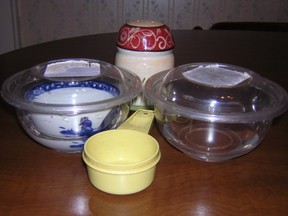
The minimum equipment required is a waterproof and airtight container to hold a smaller container or bowl. Add a little water to the larger container; place the smaller bowl inside the container, and add dry table salt to the bowl. Seal the container; wait a few days; and check for moist table salt.
The image shows a second large container with the same amount of water but no bowl; this is the control. For a proper comparison, it should also have held a small bowl that had no salt. If the empty bowl ends up with a puddle of water, then either "rain" or "dew" must have occurred.
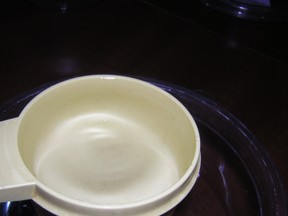
The second initial image shows the small amount of dry salt that was added to the bowl. This is a 1/3 cup measure, which was also the amount of water added to each container.
The third image shows the bowl with dry table salt, seated in the sealed container containing 1/3 cup of water.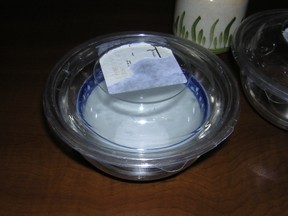
The Results of the Home Lab Experiment for Table Salt
The Proof of Concept Experiment's Results
After about 48 hours, it was clear that the salt had absorbed some water. However, this experiment wrapped up after some 72 hours.
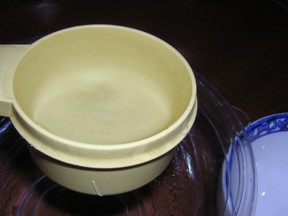
It was difficult to see any difference in the amount of water retrieved from each waterproof container. The goal, of course, was to find less water in the "control" container. Since some water clung to the outside of the bowl, the control apparatus should have started with a bowl also.
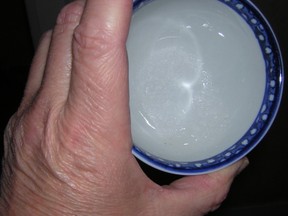
The bowl held some visible liquid, and the salt was quite wet. Clearly water had been attracted to the salt.
Suggestions for Further Experiments with Salt
Expand this Home Lab Experiment into a Science Project
Both Earth and Mars would have salty soil, rather than pure salt. Test conditions could include pure table salt (NaCl); various mixtures of sand or loam with salt; and various mixtures of calcium chloride (CaCl) with soil or sand.
The control apparatus should start with an empty bowl of the same size as the other bowls.
The experiment might have results within 24 hours if the small bowl were to sit in a broader container. This would provide a larger water surface, permitting quicker evaporation.
Weight should be included as a metric for this experiment. The key weight at the start is the "dry" bowl plus salt and sand or soil. At the end, dry the outside of the bowl and then weigh it with its contents. Any additional weight should represent the additional water absorbed from the humid atmosphere. A postage meter might be sensitive enough for this purpose.
A different proof of concept uses an uncovered bowl with the salty absorption medium. The speed of the reaction would depend on atmospheric humidity. In my home, heated for winter, the uncovered wet salt was much drier within a few hours.
Finally, this process could be tested in a refrigerator or outdoors during the winter. Will the brine stay liquid below the freezing temperature of pure water? Will the bowl continue to draw moisture from the atmosphere in conditions below room temperature?
Practical Notes and Further Experiments
Does This Matter in the Real World?
Some people add a few grains of raw, dry rice to a salt shaker (or "salt cellar"), intending that the rice will keep the salt from absorbing water from the atmosphere. Consider testing this with the apparatus in this experiment. Did the weight increase without the salt mixture becoming wet and sticky?
Or just put grains of rice into a bowl (inside the humid container), without any salt. Again, the question is whether the rice gets heavier after a few days.
Salt is used as a preservative, because bacteria that spoil meat have trouble surviving or reproducing in highly salty conditions. If the wet salt mixture is left uncovered, and retains its moisture, examine the brine under a microscope after a few weeks. Are any microbes still visibly alive?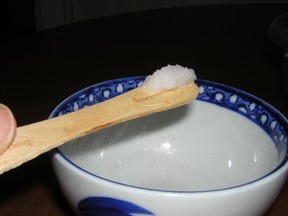
Searching for Extreme Life on Mars and at Home
Conclusion and Reference Link
Scientists continue to seek for life in extreme conditions. This experiment demonstrates that salt can draw water from the atmosphere, setting a stage with the potential for supporting life.
Reference:
"Antarctic salty soil sucks water out of atmosphere: Could it happen on Mars?". PhysOrg. (Feb. 27, 2012). Accessed March 3, 2012.
Please Add Your Comments!
Did you try this experiment? Did it work?
Did you do the simple "proof of concept", or did you carefully log the "before" and "after" weights of your test mixtures?
You might also like
Lazarus Syndrome-- When the Dead Come Back to LifeAn unresponsive patient's heart begins to beat several hours after failed CPR...
Nikola Tesla | Inventions That Made Life EasierHave you ever thought about your life without electric light, mobile phones, ...
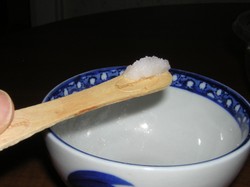


 When a Senator's Wife was Tossed from a Planeon 09/07/2012
When a Senator's Wife was Tossed from a Planeon 09/07/2012
 The Mike DeHaan Wizzographyon 12/30/2011
The Mike DeHaan Wizzographyon 12/30/2011
 How to Exercise at a Good Heart Rateon 12/25/2011
How to Exercise at a Good Heart Rateon 12/25/2011


Comments
My space and science loving daughter is going to love this. It's a great home experiment. Thanks, I'll be back with daughter when she's home from school. :)K